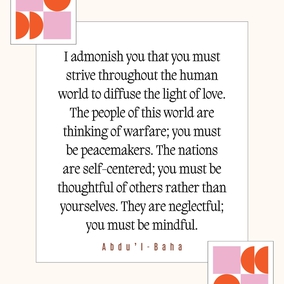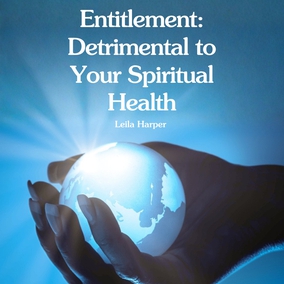The views expressed in our content reflect individual perspectives and do not represent the authoritative views of the Baha'i Faith.
Number four on the list of 5 Astounding Hellacious Things: Hell is a real place. You can visit.
Well, at least hell used to be a real place. Okay, maybe several places.
The word “hell” comes from either the Old Norse or proto-German word “hel” – although several other languages have a similar word. The Anglo-Saxons used the Old English words hel and helle, which both referred to the world of the dead. The same meaning applied to lots of related words from the Old Saxon, Middle Dutch, High German, Danish, Norwegian and Swedish vocabularies. They all described a real place, or at least a mythic place everyone thought was real: Hel.
In Norse mythology, you went to Hel when you died of sickness or old age—as opposed to dying nobly as a warrior in battle, which earned you a one-way ticket to Valhalla. In fact, the ancient curse “Go to Hel” originates from the Viking idea that the only honorable death came in combat. In the myths, Hel was presided over by a woman, also named Hel, the daughter of the legendary trickster Loki. The Norse God Odin appointed Hel to rule over vast mansions in a part of the kingdom called Niflheim, another icy cold place fed by frozen rivers.
This concept of Hel took a significant hold on the far-flung lands the Vikings conquered, and spread widely until it became accepted belief. Then the mythological, pagan concept of Hel slowly transferred to Christian theology and its vocabulary as Europe gradually Christianized over several centuries.
The Judeo-Christian tradition already had its own hell, though, originally called Gehenna—a real place, with very little mythology involved. If you travel to Israel, you can visit hell/Gehenna—it’s located at the base of Mount Zion near a town called Bir Ayyub. I’m told it’s an idyllic little valley today.
Out beyond the city walls of ancient Jerusalem, and identified in the Hebrew Bible as a valley where the son of a man named Hinnom lived, Gehenna reportedly housed apostates and idol-worshippers who sacrificed their own children by fire. This terrible image, hopefully mythical, made the entire valley a cursed landscape where fire consumed the souls of the dead—and that’s how the Aramaic and Hebrew word Gehenna got translated into the Anglo-Saxon word Hell in the King James version of the Bible. Jesus used the word Gehenna many times, describing it symbolically as the opposite to life in God’s kingdom, a place where body and soul burned in “unquenchable fire.” –Mark 9:43. This same place name in Arabic translates as Jahannam, and the Qur’an contains hundreds of references to Gehenna or Jahannam, identifying it as the Islamic hell, a place where sinners receive their eternal punishment.
You can probably see, just by studying and understanding the derivation and origin of these words, places and concepts, how the idea of a hell came about. Originally intended to serve as a metaphor that stood for a bleak, terrible place of the punishment of the dead, and meant as a purely spiritual condition that indicated the torpor of the soul, the clergy of many different religions slowly transformed the cautionary idea of hell from symbolic to real as a way to frighten and control people. Children, the uneducated and the superstitious, who made up the great mass of the populace at the time when many of the ancient religions flourished, understood the stark fear the idea of hell inspired. Religious leaders then used the fear of hell to initially enforce the moral laws of their Faiths, and then, as their religions declined, for their own ends.
But this use of the concept of hell also had some beneficial outcomes at different points in history. Knowing the difference between good and bad, between reward and retribution, is essential to every child’s upbringing. Developing a human moral code which differentiates between conduct that helps others and actions that injure others has always been the purview of religion, and in the historical periods when few people had any education a literal heaven and hell likely gave motivation to many.
The Baha’i writings say that this method of spiritual education always had a wise original intent:
Even the materialists have testified in their writings to the wisdom of these divinely-appointed Messengers, and have regarded the references made by the Prophets to Paradise, to hell fire, to future reward and punishment, to have been actuated by a desire to educate and uplift the souls of men. – Baha’u’llah, Gleanings from the Writings of Baha’u’llah, p. 155.
Today, though, most of us don’t need to believe in a literal hell or heaven. We’ve matured. We typically have the education and intelligence to see those concepts purely as symbols of the soul’s relation to God. To Baha’is, heaven and hell describe a spiritual reality, not a physical one. In this poetic passage describing the new Baha’i revelation from Abdu’l-Baha, heaven and the “Stygian dark” of hell take on that new symbolic meaning:
When the Sun of Reality shed its endless bounties from the Dawning-Point of all desires, and this world of being was lit with that sacred light from pole to pole, with such intensity did it cast down its rays that it blotted out the Stygian dark forever, whereupon this earth of dust became the envy of the spheres of heaven, and this lowly place took on the state and panoply of the supernal realm. The gentle breeze of holiness blew over it, scattering abroad sweet savours; the spring winds of heaven passed by it, and over it, from the Source of all bestowals, were wafted fruitful airs that carried boundless grace. Then the bright dawn rose, and there came tidings of great joy. The divine springtime was here, pitching its tents in this contingent world, so that all creation leapt and danced. – Selections from the Writings of Abdu’l-Baha, pp. 7-8.

















Comments
Sign in or create an account
Continue with Googleor